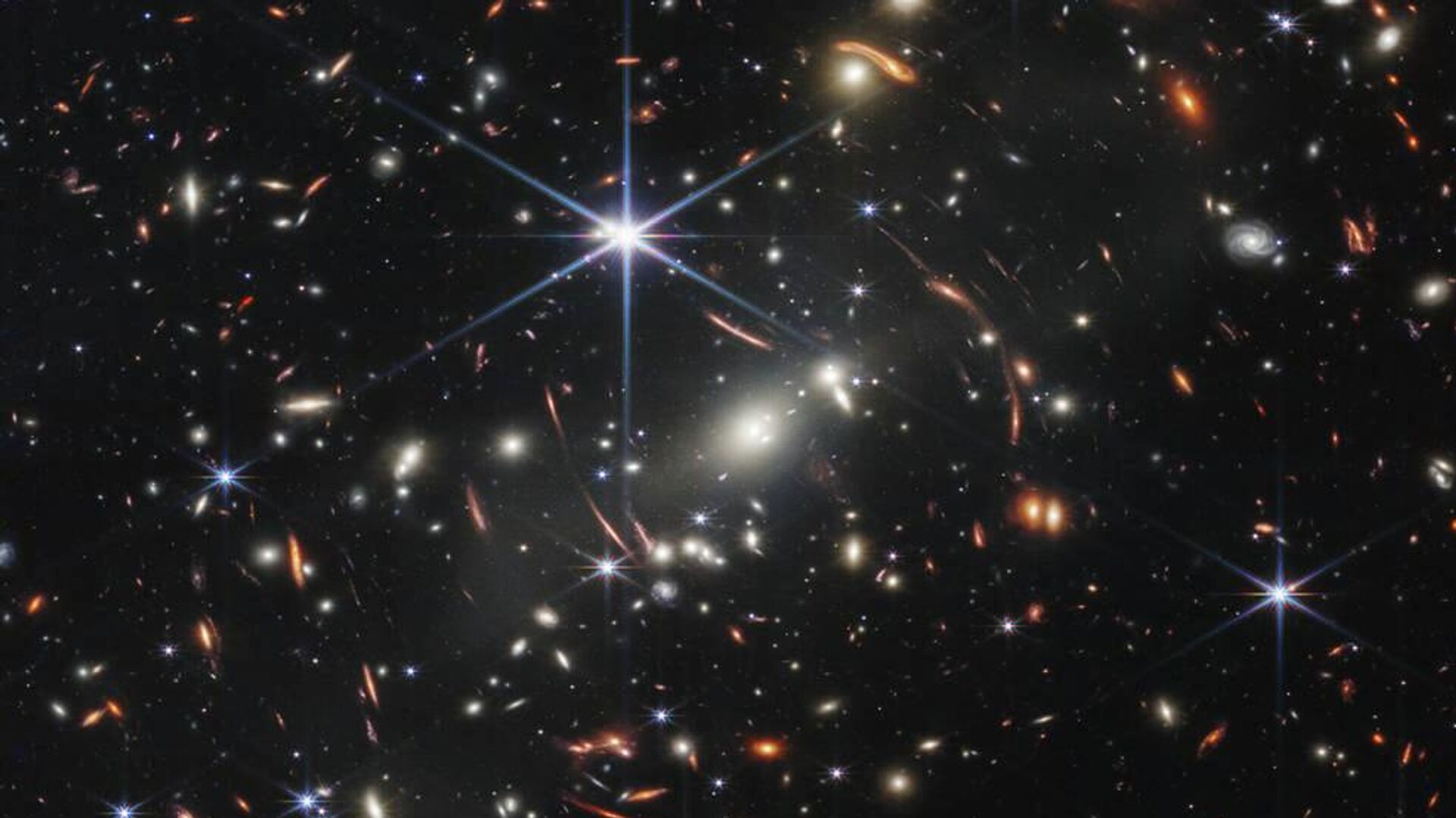https://sputnikglobe.com/20230227/astronomers-claim-first-detection-of-universe-spanning-cosmic-web-magnetic-field-1107854936.html
Astronomers Claim First Detection of Universe-Spanning ‘Cosmic Web’ Magnetic Field
Astronomers Claim First Detection of Universe-Spanning ‘Cosmic Web’ Magnetic Field
Sputnik International
A group of astronomers have claimed to have found the first observed evidence of a universe-spanning magnetic field long theorized to exist, but which had remained too faint for humans to detect.
2023-02-27T22:22+0000
2023-02-27T22:22+0000
2023-02-27T22:22+0000
science & tech
astronomy
magnetic fields
universe
https://cdn1.img.sputnikglobe.com/img/07e6/07/0b/1097206042_0:225:985:779_1920x0_80_0_0_655dd7df00eb01477b0736bb30803c60.jpg
At the intergalactic scale, astronomers have long observed galactic superclusters, or groups of galaxies traveling through the universe together and surrounded by barren voids of empty space. Stretching between them are long filaments of plasma, a dilute gas full of ionized particles.Those filaments were observed for the first time in 2021 using the MUSE instrument, a 3-D spectrograph installed on the European Southern Observatory’s Very Large Telescope in Chile.Ionization simply means the atoms have picked up an extra electron from another atom or lost an electron to another atom. As those electrons move, they generate an electric current along what is effectively a wire (the filament), and electric currents general electromagnetic fields. Those ions can also emit electromagnetic radiation in the form of light waves, with famous examples being neon lights and the Aurora borealis.Another problem then arose: lots of things emit radio signals in the universe, and most of them are louder and closer to Earth than these filaments. Fortunately, the scientists only needed polarized radio light, which they found easy to sort out of other kinds of radio emissions.The scientists used data from a sweeping collection of all-sky radio maps, overlaying them and comparing them to look for evidence of the polarized radio signals they suspected might be there. And there they were.The scientists summarized their findings in a recent paper in Science Advances, a peer-reviewed journal published by the American Association for the Advancement of Science.
Sputnik International
feedback@sputniknews.com
+74956456601
MIA „Rossiya Segodnya“
2023
News
en_EN
Sputnik International
feedback@sputniknews.com
+74956456601
MIA „Rossiya Segodnya“
Sputnik International
feedback@sputniknews.com
+74956456601
MIA „Rossiya Segodnya“
astronomy, magnetic fields, cosmic web
astronomy, magnetic fields, cosmic web
Astronomers Claim First Detection of Universe-Spanning ‘Cosmic Web’ Magnetic Field
A group of astronomers have claimed to have found the first observed evidence of a universe-spanning magnetic field long theorized to exist, but which had remained too faint for humans to detect.
At the intergalactic scale, astronomers have long observed galactic superclusters, or groups of galaxies traveling through the universe together and surrounded by barren voids of empty space.
Stretching between them are
long filaments of plasma, a dilute gas full of ionized particles.Those filaments were observed for the first time in 2021 using the MUSE instrument, a 3-D spectrograph installed on the European Southern Observatory’s Very Large Telescope in Chile.
However, what these scientists have found is evidence of faint magnetic fields created by those filaments because they are ionized.
Ionization simply means the atoms have picked up an extra electron from another atom or lost an electron to another atom. As those electrons move, they generate an electric current along what is effectively a wire (the filament), and electric currents general electromagnetic fields. Those ions can also emit electromagnetic radiation in the form of light waves, with famous examples being neon lights and the Aurora borealis.
However, when looking for magnetic fields
billions of light-years away, it’s impossible at the present to detect them, so the scientists looked for evidence of such fields by looking for the radio waves they emit - another type of electromagnetic radiation just like visual light.
Another problem then arose:
lots of things emit radio signals in the universe, and most of them are louder and closer to Earth than these filaments. Fortunately, the scientists only needed polarized radio light, which they found easy to sort out of other kinds of radio emissions.
The scientists used data from a sweeping collection of all-sky radio maps, overlaying them and comparing them to look for evidence of the polarized radio signals they suspected might be there. And there they were.
"Our interpretation is well supported by a detailed comparison with state-of-the-art cosmological simulations," they noted.
The scientists summarized their findings in a recent paper in
Science Advances, a peer-reviewed journal published by the American Association for the Advancement of Science.

